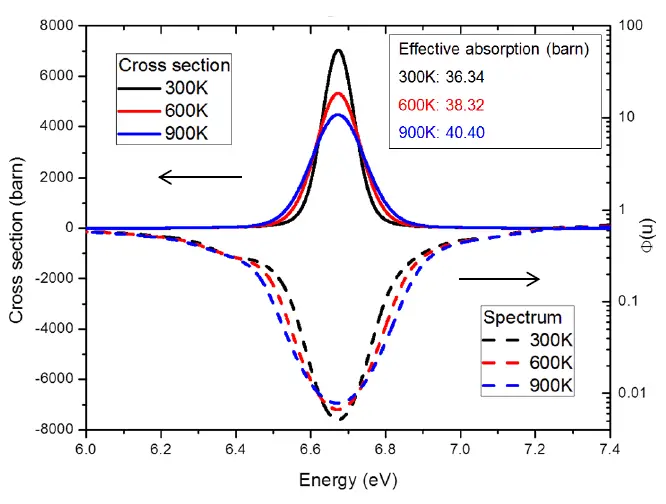

In contrast, for atomic nuclei heavier than iron or nickel, energy can be released by splitting the heavy nuclei through nuclear fission. For atomic nuclei lighter than iron and nickel, energy can be extracted by combining iron and nickel nuclei together through nuclear fusion. This is why iron is at the top of the binding energy curve. The nucleon of an iron atom is the most stable nucleon found in nature, and it neither fuses nor splits. Moreover, atoms try to become more stable by increasing their binding energy.

The more binding energy held within the bonds, the more stable the atom. The total amount of energy held within the bonds of atoms is called binding energy. In a typical nuclear reaction involving 235U and a neutron:Ģ36 92U = 144 56Ba + 89 36Kr + 3 n + 177 MeVĪtoms are held together by two of the four fundamental forces of nature: the weak and strong nuclear bonds.

#Nuclear fission uranium energy density free#
Nuclear fission is the splitting of a massive nucleus into photons in the form of gamma rays, free neutrons, and other subatomic particles. Deuterium and Tritium are isotopes of hydrogen.Ģ 1Deuterium + 3 1 Tritium = 4 2He + 1 0 n + 17.6 MeV On Earth, the most likely fusion reaction is Deuterium–Tritium reaction. The energy released in fusion is related to E = mc 2 (Einstein’s famous energy-mass equation). Nuclear fusion is the reaction in which two or more nuclei combine, forming a new element with a higher atomic number (more protons in the nucleus). Hydrogen isotopes (Deuterium and Tritium) are the primary fuel used in experimental fusion power plants.įusion of deuterium with tritium creating helium-4, freeing a neutron, and releasing 17.59 MeV of energy. Uranium is the primary fuel used in power plants. One class of nuclear weapon is the hydrogen bomb, which uses a fission reaction to "trigger" a fusion reaction.įusion is an experimental technology for producing power. One class of nuclear weapon is a fission bomb, also known as an atomic bomb or atom bomb. The energy released by fusion is three to four times greater than the energy released by fission. The energy released by fission is a million times greater than that released in chemical reactions, but lower than the energy released by nuclear fusion. Takes little energy to split two atoms in a fission reaction.Įxtremely high energy is required to bring two or more protons close enough that nuclear forces overcome their electrostatic repulsion. High density, high temperature environment is required.

Comparison chart Nuclear Fission versus Nuclear Fusion comparison chartįission is the splitting of a large atom into two or more smaller ones.įusion is the fusing of two or more lighter atoms into a larger one.įission reaction does not normally occur in nature.įission produces many highly radioactive particles.įew radioactive particles are produced by fusion reaction, but if a fission "trigger" is used, radioactive particles will result from that.Ĭritical mass of the substance and high-speed neutrons are required.


 0 kommentar(er)
0 kommentar(er)
